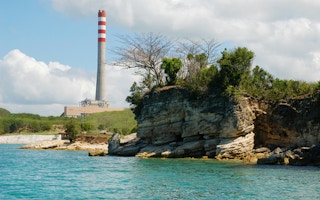Greenpeace Philippines on Wednesday released a new report on the environmental and economic impacts of coal use in the country, citing how the Philippines could lose billions in revenues on top off incurring additional external costs.
Called the “The True Cost of Coal”, the 40-page document is the first of three volumes that presents a comprehensive study on the extent of damages caused by coal mining and use. This will help stimulate the debate on the issue, particularly amongst policymakers, and promote the need for clean energy, said the environmental NGO.
Currently, there are 13 coal-fired power plants in the Philippines producing electricity, and with 45 more in the works. This is despite the Renewable Energy Act of 2008 which directs the government to develop renewable energy sources and promote the use of affordable clean energy in the country.
In the document, Greenpeace noted a June 2013 World Wide Fund for Nature (WWF) report that stated “the Philippines risks losing “over US$2.5 billion in potential renewable energy investments” due to delays in the crafting of rules and mechanisms that were causing investor uncertainty”. At least 384 renewable energy service contracts were also pending approval from the Department of Energy (DOE) in 2011, Greenpeace quoted from the WWF report.
Meanwhile, the 13 coal plants with a combined installed capacity of 4,937MW continue to emit “millions of tonnes of pollution every year, releasing toxic substances like mercury, lead, arsenic, cadmium and tiny sulphate and nitrate particles that end up deep in people’s lungs”, the Greenpeace report noted.
Aside from health impacts, the carbon emissions coming these different plants – shown in estimates in the report – also result in “water shortages, water contamination, and agricultural and marine yield losses”.
Reuben Andrew Muni, Greenpeace Philippines’ climate and energy campaigner, said: “Our leaders have always envisioned a green and prosperous Philippines and yet, by promoting dirty coal projects, they are burning our chances of a more sustainable economic development. What’s more, they are asking Filipinos to pay dearly for a future marked by more deadly and extreme weather events aggravated by the burning of fossil fuels like coal.”
According to the report, one of the biggest myths of coal, and a reason for its growing use, is that it is cheap, and with some government officials saying it will contribute to the country’s progress.
“
By constantly spending money to acquire foreign coal, the Philippines is unnecessarily squandering its foreign currency, sending it abroad, which negatively affects its balance of trade, as well as its energy independence
Amalie Obusan, Greenpeace Southeast Asia regional climate and energy campaigner
One example is Energy Secretary Carlos Jericho Petilla, who said “renewable energy is the ideal form of energy but the cost of putting up plants for this type of energy is very high to the point that power consumers could pay double the monthly rate they are paying now, [whereas] coal is the only answer to the nation’s current extreme power shortages”, the report noted, quoting an Energy Biz 2013 article.
Even Philippine President Benigno Aquino III, who is also the chair of the Climate Change Commission of the country, defended the addition of more coal plants in his 2013 State of the Nation Address, Greenpeace pointed out.
They highlighted, however, that a 600MW coal plant costs about US$2 billion, and more importantly, more than 34 per cent of the country’s power generation comes from coal imported from Indonesia.
“By constantly spending money to acquire foreign coal, the Philippines is unnecessarily squandering its foreign currency, sending it abroad, which negatively affects its balance of trade, as well as its energy independence,” said Amalie Obusan, regional climate and energy campaigner for Greenpeace Southeast Asia.
She added: “Compare this with renewable energy which is clean and naturally abundant in the Philippines. While the price of coal rises, the price of wind and sun doesn’t change, it is always free.”
In fact, in another Greenpeace report, entitled “Philippine Energy Revolution Roadmap to 2020”, the NGO noted that renewable energy can supply more than half of the country’s energy needs as early as 2020.
“This True Cost of Coal report should make President Aquino and his energy officials to rethink about approving more coal-fired plants, aside from the 45 plants currently in the pipeline,” said Muni.
“Coal is not cheap and the human and environmental costs of dirty energy are just too high to ignore. We cannot allow the status quo to continue,” he stressed. “The goal of inclusive economic growth need not be in sharp contradiction with the goal of environmental protection and conservation. Clean and renewable energy is possible. We must use it to our advantage and end the age of coal,” he explained.
The next two volumes of the Greenpeace report will further explore the external costs of coal, such as the losses incurred by farmers and homeowners whose crops and properties are affected due to the pollution coming from nearby power plants. The reports will also look into the social impacts of coal use, including loss of cultural heritage, community displacement and human rights violations.
To read the “The True Cost of Coal”, download the report here.

















